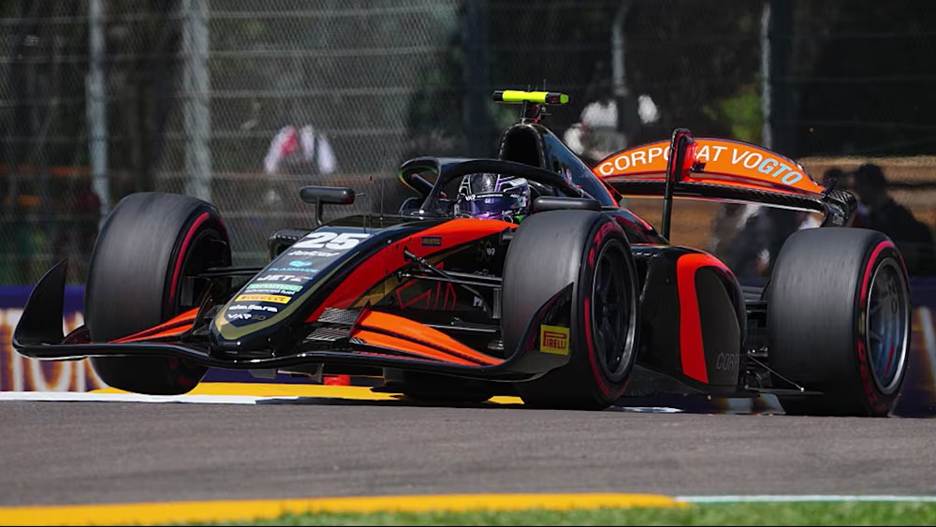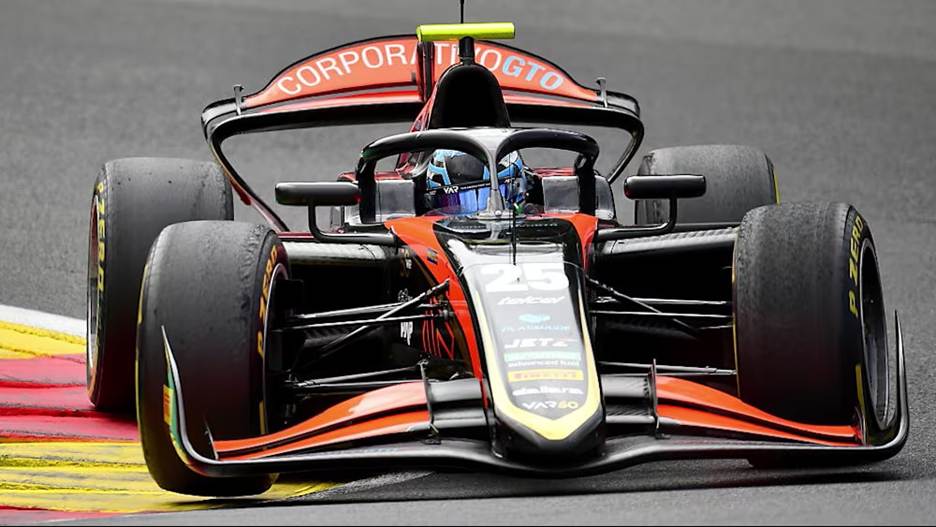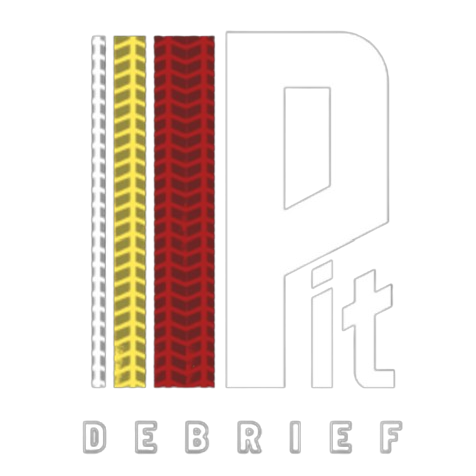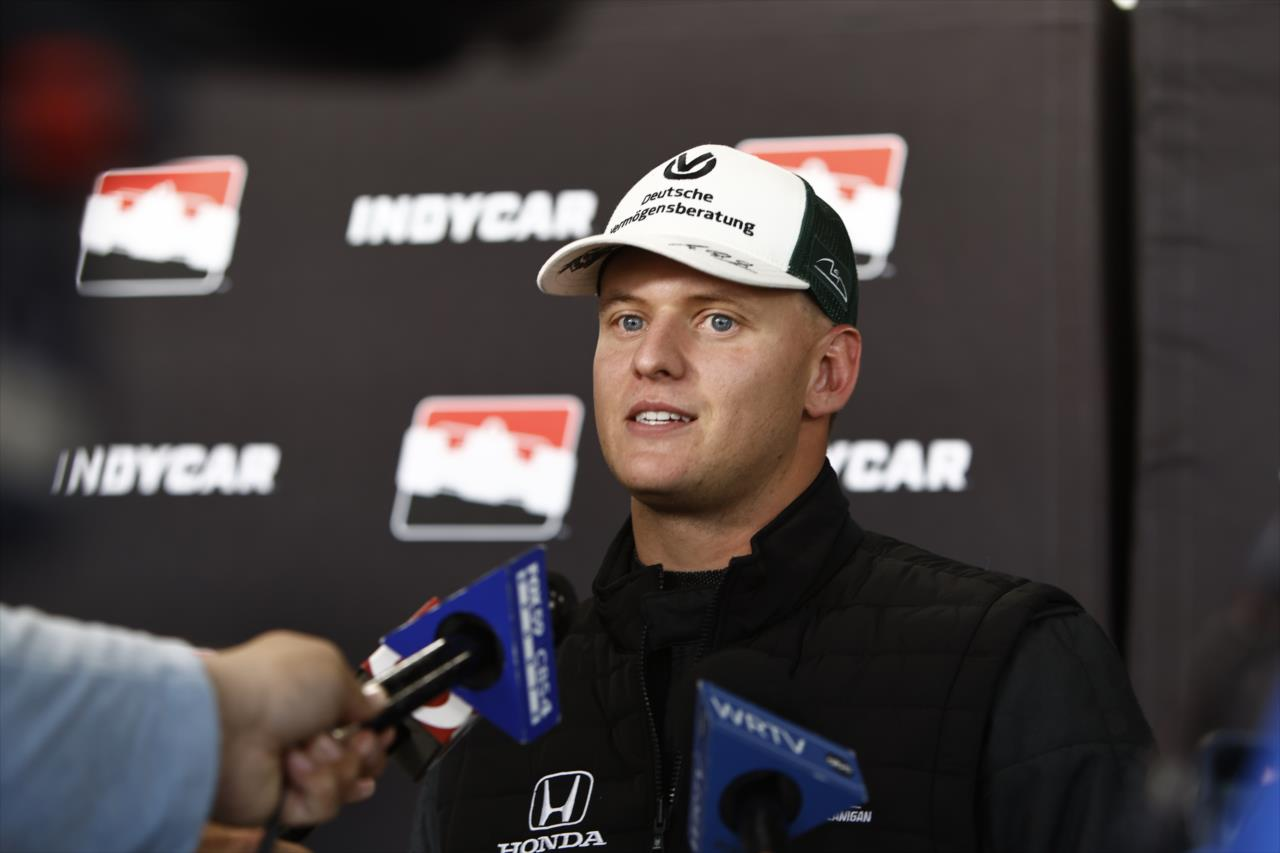The Circuit de Barcelona-Catalunya has long stood as one of Formula 2’s toughest proving grounds. Known for its high degradation, long corners, and demanding layout, it exposes every weakness in car setup and driver rhythm. For Rafael Villagómez, the 2025 Barcelona F2 round represented a weekend of contrasts — a slow beginning followed by an unexpected turnaround that delivered his first podium in the series.
In an exclusive interview with Pit Debrief, Villagómez described in detail how the weekend unfolded from difficult early sessions to a breakthrough result in the Sprint Race, offering a clear, moment-by-moment look into how strategy, instinct, and preparation can intersect across a racing weekend.
Early difficulties and learning from practice
From the opening laps of Free Practice, it became clear that Villagómez and his team faced an uphill task. The car’s balance on the hard compound tyre proved problematic, with grip levels varying across sectors. Practice sessions in Barcelona often reveal underlying weaknesses, and this one did just that. Villagómez recalled that the early signs were far from promising.
“Yeah, it was a really good weekend. It didn’t start very well. The Practice wasn’t good. We struggled a lot with the hard compound.”
The early challenge forced the team to focus on tyre behaviour more closely than usual, shaping both setup and strategy discussions for the rest of the weekend.
A Qualifying gamble and its consequences
As the team moved into Qualifying, their attention shifted to finding a setup that could extract short-run speed. Barcelona’s long corners often tempt teams into taking risks with car balance, and Villagómez’s side of the garage opted for a more aggressive configuration. Initially, it seemed to pay off. However, as he later explained, that same aggression became costly.
“Qualifying was going pretty well, but basically, we opted for maybe a setup that was a little bit too aggressive on the tyre, and in Barcelona, that never works because we were pretty quick Sector 1, and then by the end of sector two, we ran out of tyres so we couldn’t compete [on] the tyre.”
The result left Villagómez starting near the back of the grid — a difficult position at the Circuit de Barcelona-Catalunya.

Adapting to setbacks and understanding tyre limitations
Following the Qualifying session, Villagómez and his team reassessed their approach. Despite frustration, the car’s raw pace still gave reason for optimism. The issue lay not in overall speed but in consistency across tyre compounds. Heading into the Sprint Race, he knew recovery was possible if he could manage degradation more effectively.
“And I was pretty annoyed after that, of course. I knew we had the speed, but we started from the back, you know, because we didn’t get a good lap in Qualifying. And funnily enough, in that Sprint Race, because we started on the hards and like I said, we had like a struggle. We still don’t really get why, somehow we are not able to switch on the hards.”
The difficulties with the hard tyres persisted, limiting traction and making the early stages of the race particularly challenging.
A mid-race gamble pays off
When the Safety Car appeared midway through the Sprint Race, the balance of risk and opportunity shifted dramatically. Villagómez, running on hard tyres that continued to underperform, recognised that staying on the same compound would offer little benefit. Through quick communication with his engineer, he suggested a bold alternative — to pit for softs and gather crucial data for the following day’s Feature Race.
“And I remember just going on the radio like, ‘okay, if it’s like this, we might as well just put the soft compound and see how it behaves for tomorrow because I don’t see it going very far’ and then I was on Safety Car and then, yeah, I said, ‘okay.’”
The choice to switch tyres was both reactive and informed. On one hand, it arose from the immediate circumstances of the race; on the other, it stemmed from prior discussions within the team. The decision demonstrated how pre-race planning and in-race instinct can align at the right moment.
“We knew we go through scenarios in a debrief before the race. So we knew exactly that if there was a Safety Car, we needed to box because especially where we were, we had to risk it. And we were, I think, the ninth car to box or something like that. We were the last car to box. And yeah, I think on the on the soft, basically the car, it showed the pace the car had.”
The stop proved decisive. Once on the soft compound, Villagómez unlocked the car’s full potential, immediately finding grip and balance that had been missing throughout the earlier sessions. The strategic call under the Safety Car became the turning point of his entire weekend.
Discovering the pace and staying focused
As his speed increased, Villagómez climbed steadily through the field. With the car now balanced and the tyres performing well, he focused purely on execution. Yet, amid the push forward, he remained unaware of how high he had climbed in the order.
“It was super strong. And I didn’t realise, to be honest, it was a podium until one lap to go because all I told myself is, ‘okay, I don’t need to waste any time overtaking people.’”
As the laps counted down, several other drivers had also switched to soft tyres, creating a new tactical layer. Every overtake had to be planned with care, as any delay could erase the tyre advantage. Villagómez described how, once informed of who he was racing for position, he approached the final overtaking opportunity with a clear plan.
“There were a couple of soft runners as well. The hard was a little bit easier, but the soft guys, it was like as soon as I have an opportunity, I just need to get it. And then when they told me, like, oh, ‘Crawford is for P3’, then I was like, ‘Okay, I just need to make sure that I do it in a place where he doesn’t expect it because maybe he can defend and I have one and a half laps’. And yeah, I was pretty happy with the podium.”
It was a decisive move in a critical moment. The overtake for third place came late in the race and highlighted the combination of patience and timing that had characterised his recovery drive.

Contrasting fortunes on Sunday
Following the high of the Sprint Race, attention turned to Sunday’s Feature Race, which brought a different outcome. After showing strong pace in the opening laps, Villagómez’s car suffered a mechanical issue that forced him to retire. The sudden change from success to setback illustrated the volatility of motorsport weekends.
“On Sunday, it was a different story, we had a DNF because of an engine. But it’s one of those weekends where, you know, 10 minutes before that, I was just saying things are not looking great and all of a sudden things can turn around. So that’s just a little bit of how motorsport works.”
For Villagómez, every phase of the weekend reinforced a core belief about persistence and mindset. Regardless of results or position, his approach to competition remains anchored in seeing every lap through to the end.
“I don’t think you need to give up or let anything down until the last moment.”





